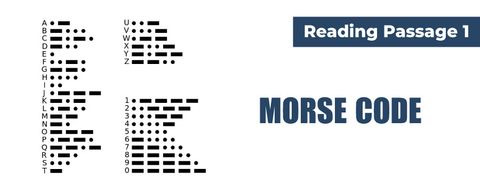
IELTS Recent Mock Tests Volume 3
- Published on: 31 Jan 2018
- Tests taken: 1,171,849
Answer Keys:
Part 1: Question 1 - 13
- 1 x
- 2 xi
- 3 iii
- 4 i
- 5 vi
- 6 ii
- 7 ix
- 8 vii
- 9 FALSE
- 10 TRUE
- 11 TRUE
- 12 NOT GIVEN
- 13 NOT GIVEN
- 1 x
- 2 xi
- 3 iii
- 4 i
- 5 vi
- 6 ii
- 7 ix
- 8 vii
- 9 FALSE
- 10 TRUE
- 11 TRUE
- 12 NOT GIVEN
- 13 NOT GIVEN
Part 2: Question 14 - 26
- 14 rules, guiding principles
- 15 mentor
- 16 patterns of behavior/patterns
- 17 complex
- 18 knowledge
- 19 FALSE
- 20 NOT GIVEN
- 21 TRUE
- 22 TRUE
- 23 TRUE
- 24 accurate
- 25 human biases
- 26 consensus
- 14 rules, guiding principles
- 15 mentor
- 16 patterns of behavior/patterns
- 17 complex
- 18 knowledge
- 19 FALSE
- 20 NOT GIVEN
- 21 TRUE
- 22 TRUE
- 23 TRUE
- 24 accurate
- 25 human biases
- 26 consensus
Part 3: Question 27 - 40
- 27 C
- 28 A
- 29 D
- 30 B
- 31 lapse/time interval
- 32 continuous action
- 33 time
- 34 greater length
- 35 slowed down proportionately
- 36 A
- 37 C
- 38 G
- 39 E
- 40 F
- 27 C
- 28 A
- 29 D
- 30 B
- 31 lapse/time interval
- 32 continuous action
- 33 time
- 34 greater length
- 35 slowed down proportionately
- 36 A
- 37 C
- 38 G
- 39 E
- 40 F
Leaderboard:
| # | User | Score | Time | |
|---|---|---|---|---|
| Ekaterina Soboleva |  | 9.0 | 15:29 | |
| atefehzafarian |  | 9.0 | 15:40 | |
| thanhson0145 |  | 9.0 | 15:49 | |
| 4 | Linh Nguyen |  | 9.0 | 16:10 |
| 5 | DOMIN INTERNATIONAL |  | 9.0 | 17:34 |
| 6 | tooladuyen |  | 9.0 | 18:43 |
| 7 | Jason Nguyen |  | 9.0 | 19:11 |
| 8 | Nguyễn Thùy Linh |  | 9.0 | 20:00 |
| 9 | Hoang Nguyen |  | 9.0 | 20:57 |
| 10 | Hazel Huang |  | 9.0 | 21:16 |
Review & Explanations:
Questions 1-8
Reading passage 1 has eight paragraphs, A-H.
Choose the correct heading for paragraphs A-H from the list of headings below. Write the correct number, i-xi, in boxes 1-8 on your answer sheet.
| List of Headings | |
| i | The advantage of Morse’s invention |
| ii | A suitable job for women |
| iii | Morse’s invention was developed |
| iv | Sea rescue after the invention of radiotelegraphy |
| v | The emergence of many job opportunities |
| vi | Standard and variations |
| vii | Application of Morse code in a new technology |
| viii | The discovery of electricity |
| ix | International expansion of Morse Code |
| x | The beginning of an end |
| xi | The move of using code to convey information |
1 Paragraph A
2 Paragraph B
3 Paragraph C
4 Paragraph D
5 Paragraph E
6 Paragraph F
7 Paragraph G
8 Paragraph H
- 1 Answer: x
Note:
In section 1, you are given two different types of questions: matching heading questions and True/False/Not Given questions. Normally you are recommended to finish the latter first because it takes less time and effort, but due to these questions are in order, we can do T/F/NG questions at the same time as completing matching heading. By doing this you will be able to get the general meaning of the text and this will help you to finish T/F/NG more quickly without locating information twice. The suggestion strategy is as below:
Skim and read for gist to grab the main idea of each paragraph. Try to sum up the general meaning of each paragraph in one or two words.
Look at the headings and identify keywords within each heading.Then match the general content to one heading that you are sure about. If you cannot find an answer for a question, leave it pending and proceed.
Take a quick look at the first question of T/F/NG section to see whether you can complete it or not (for sure, you should read the first two questions, just in case because the first one could be Not Given). Keep in mind that those questions are in order, so as long as the first two questions are still not answered yet, you do not have to read the following questions. For example, paragraph A does not contain any information to answer neither Q9 nor Q10 of T/F/NG part, you can move to paragraph B straight ahead without looking at Q11-Q13. Then while doing matching heading for paragraph B we find out that we can locate the answer for Q9, hence the answers for questions from no.10 to no.13 should be seen at paragraph after B.
Repeatedly apply these above steps for other paragraphs
If you find this tip complicated and hard to follow, just finish each part one by one. It’s up to you to decide the sequence of matching heading before T/F/NG or vice versa.
Keywords in Questions/ Answers
Similar words in Passage
Q1: Paragraph A
x: The beginning of an end
It was a message signal-ling the end of the use of Morse code for distress calls in French waters. Since 1992 countries around the world have been decommissioning their Morse equipment with similar (if less poetic) sign-offs, as the world's shipping switches over to a new satellite-based arrangement, the Global Maritime Distress and Safety System.
Note:
To understand the general idea of a paragraph, you are expected not to read everything but try to skip the text, usually reading the first and the last sentences is enough. But for this article, you have to briefly look at the whole paragraph.
The paragraph talked about Morse equipment which had been decommissioned (officially stop being used) worldwide and replaced by a new satellite-based system. Among the given heading, the heading “x: the beginning of an end” is the one suitable for the main content. The answer is x
- 2 Answer: xi
Keywords in Questions/ Answers
Q2: Paragraph B
Note:
Paragraph B indicated the history of the code. It’s quite hard to identify the main idea of this section and easily get confused to choose which heading suits best. Therefore you can move on and come back later. After you have matched the headings of the rest paragraphs, the answer reveals itself even there are more headings than paragraphs. In this circumstance, the answer is “xi: The move of using code to convey information”. Because in the past, information was transferred by radio operators, then with Morse’s idea, information/messages in code could be conveyed by an electric telegraph. Thus, the final answer should be "xi"
Tip: It is noticeable that paragraph B contains information of the answers for Q9 and Q10, you should take no time to finish these two questions even though you have not yet made the final decision of matching heading.
- 3 Answer: iii
Keywords in Questions/ Answers
Similar words in Passage
Q3 Paragraph C:
iii: Morse’s invention was developed
Morse later abandoned this scheme and, with the help of an associate, Alfred Vail, devised the Morse alphabet, which could be used to spell out messages a letter at a time in dots and dashes.
Note:
If you only read the very first sentence of this paragraph which compared Morse’s design to his rival design, you would probably get the answer wrong by choosing the statement “i: The advantage of Morse’s invention” as the heading of this section.
However, the first sentence talked about how the first Morse’s design was operated, then the last sentence indicated that he changed his mind to abandon his first idea of a number-based code and invented/devised a new alphabet code later. Thus the whole paragraph told readers about how Morse’s invention was developed, we can match C to iii.
- 4 Answer: i
Keywords in Questions/ Answers
Similar words in Passage
Q4: Paragraph D: “i: The advantage of Morse’s invention”
But although this meant that anyone could use it, it also required five wires between telegraph stations. Morses telegraph needed only one. And some people, it soon transpired, had a natural facility for Morse code.
Note:
This paragraph required us to briefly read the whole text to understand its main content because using skim technique did not work for this section. We can see that compared to other telegraphs, Morse’s design was much more simply by using only one needle and one wire (instead of five as others) to send a message. This advantage made Morse’s invention become popular. Heading i suits best with paragraph D.
Tip: after reading this paragraph and doing matching heading, you should move to T/F/NG to see whether there is any question could be answered. You might realize that this paragraph contained information to answer Q11 as well.
- 5 Answer: vi
Keywords in Questions/ Answers
Similar words in Passage
Q5: Paragraph E
“vi: Standard and variations”
It was adopted as the European standard in 1851, allowing direct connections between the telegraph networks of different countries [...] By this time Morse code had been revised to allow for accents and other foreign characters, resulting in a split between American and International Morse that continues to this day.
Note:
In order to identify the final answer, you might see yourself considering 03 headings “vi: Standard and variations”; “vii: Application of Morse code in a new technology” and “ix: International expansion of Morse Code”.
First off, we can eliminate choice ix because this paragraph did not mention anything related to the expansion of Morse code. It said the code had been divided/split into American Morse code and International version, not international expansion.
There is not enough information to confirm a NEW technology had been used to apply Morse code. Paragraph E just indicated how Morse code had been changed/modified/revised to be suitable for other foreign languages. Therefore, heading vii is not a correct answer.
At the beginning sentence, we could see that Morse code had been recognized as an European standard and at the end of paragraph E, we knew the code had more than one variation. Thus, we can make a match “E - vi”
- 6 Answer: ii
Keywords in Questions/ Answers
Similar words in Passage
Q6: Paragraph F
ii: A suitable job for women
Telegraphy was also deemed suitable work for women. By 1870, a third of the operators in the Western Union office in New York, the largest telegraph office in America, were female.
Note:
After quickly running eyes over the paragraph and all given headings, there are 02 headings left that might sum up the general content of paragraph F: “ii: A suitable job for women” or “v: The emergence of many job opportunities”. According to the article, with the development of Morse code, “a distinct telegraphic sub-culture was emerging” and there were job opportunities for first-class operators in big cities as well as inexperienced operators in rural areas. However, paragraph F did not clarify the number of emerging job opportunities thus we don’t know it’s “many” or not. Furthermore, the last sentence of the paragraph confirmed that telegraphy was suitable for women. With these reasons, the final answer is “ii”
For your understanding: “at the bottom of the pile” does not literally mean something located at the bottom of a machine’s pile, it is an idiom implied to the least important position in a society or an organization.
- 7 Answer: ix
Keywords in Questions/ Answers
Similar words in Passage
Q7: Paragraph G:
ix: International expansion of Morse CodeBy the time of his death in 1872, the world was well and truly wired: more than 650,000 miles of telegraph line and 30,000 miles of submarine cable were throbbing with Morse code; and 20,000 towns and villages were connected to the global network.
Note:
By running eyes over the noticeable statistics in paragraph G, we acknowledged that Morse code had become popular all over the world (“20.000 towns and villages were connected to the global network”). Among all the given headings, statement “ix: international expansion of Morse code” fits the main idea the most. Without doubt, the final answer is ix
- 8 Answer: vii
Keywords in Questions/ Answers
Similar words in Passage
Q8: Paragraph H:
vii: Application of Morse code in a new technology
Morse code, however, was about to be given a new lease of life thanks to another new technology: wireless.
Note:
The first sentence of paragraph H said that Morse code had been come to an end by 1980s and the author also indicated in the last sentence that 20 years later, “Morse radio equipment was commonplace on ships”. Therefore, it is implied that Morse code must have been updated during that time. Briefly looking at the paragraph one more time, we found out it’s wireless technology that made Morse code popular again. Hence the match of “H-vii” is a correct answer.
Questions 9-13
Do the following statements agree with the information given in Reading Passage 1?
In boxes 9-13 on your answer sheet, write
| TRUE | if the statement agrees with the information |
| FALSE | if the statement contradicts the information |
| NOT GIVEN | If there is no information on this |
9 Morse had already been famous as an inventor before his invention of Morse code.
10 Morse waited a long time before receiving support from the Congress.
11 Morse code is difficult to learn compared with other designs.
12 Companies and firms prefer to employ telegraphy operators from rural areas.
13 Morse died from overwork.
- 9 Answer: FALSE
Keywords in Questions/ Answers
Similar words in Passage
Q9: Morse had already been famous as an inventor before his invention of Morse code.
At the time Morse Was a painter and occasional inventor, but when another of the ships passengers informed him of recent advances in electrical theory, Morse was suddenly taken with the idea of building an electric telegraph to send messages in codes.
Note:
You should acknowledge the keywords in the statement are “famous as an inventor” and “before”. According to paragraph B, while Morse was on a ship crossing the Atlantic, he came up with the idea of new codes for sending messages. It was clearly said that at that time (or in other words: before he invented Morse code) he was an occasional inventor, not a famous one. We can confirm that the statement is False.
- 10 Answer: TRUE
Keywords in Questions/ Answers
Similar words in Passage
Q10: Morse waited a long time before receiving support from the Congress.
it was 12 years, for example, before he secured money from Congress to build his first telegraph line
Note:
By searching for a particular name of “Congress”, we find out that the answer should be located in paragraph B. In this circumstance, “support from the Congress” should be understood as “money”. In addition, it took Morse such a long time up to 12 years before receiving/securing money from Congress. With this reason, the final answer is True.
- 11 Answer: TRUE
Keywords in Questions/ Answers
Similar words in Passage
Q11: Morse code is difficult to learn compared with other designs.
At first, the need to learn this complicated-looking code made Morses telegraph seem impossibly tricky compared with other, more user-friendly designs, Cookes and Wheatstones telegraph, for example, used five needles to pick out letters on a diamond-shaped grid.
Note:
The first sentence in paragraph D said that Morse code had a complicated looking and was impossibly tricky to learn, whereas other codes had user-friendly designs. Therefore, we can make sure that the statement is True.
- 12 Answer: NOT GIVEN
Keywords in Questions/ Answers
Q12: Companies and firms prefer to employ telegraphy operators from rural areas.
Note:
According to paragraph F, first-class operators usually secured the best-paid jobs in big cities while inexperienced operators were likely to get part-time jobs in rural areas. There is no information about telegraphy operators from the countryside are more preferred by companies/firms thus we can write down “Not given” as the final answer.
- 13 Answer: NOT GIVEN
Keywords in Questions/ Answers
Similar words in Passage
Q13:
Morse died from overwork.
Note:
The information about Morse's death was presented in paragraph G but the provided data is not enough to confirm that overwork had caused his death. It can be said that the statement is not given, of course.
READING PASSAGE 1
You should spend about 20 minutes on Questions 1-13, which are based on Reading Passage 1 on the following pages.

Morse Code
Morse code is being replaced by a new satellite-based system for sending dis-tress calls at sea. Its dots and dashes have had a good run for their money.
A "Calling all. This is our last cry before our eternal silence.” Surprisingly this message, which flashed over the airwaves in the dots and dashes of Morse code on January 31st 1997, was not a desperate transmission by a radio operator on a sinking ship. Rather, it was a message signal-ling the end of the use of Morse code for distress calls in French waters. Since 1992 countries around the world have been decommissioning their Morse equipment with similar (if less poetic) sign-offs, as the world's shipping switches over to a new satellite-based arrangement, the Global Maritime Distress and Safety System. The final deadline for the switch-over to GMDSS is February 1st, a date that is widely seen as the end of art era.
B The code has, however, had a good history. Appropriately for a technology commonly associ-ated with radio operators on sinking ships, the idea of Morse code is said to have occurred to Samuel Morse while he was on board a ship crossing the Atlantic, At the time Morse Was a painter and occasional inventor, but when another of the ships passengers informed him of recent advances in electrical theory, Morse was suddenly taken with the idea of building an electric telegraph to send messages in codes. Other inventors had been trying to do just that for the best part of a century. Morse succeeded and is now remembered as "the father of the tele-graph" partly thanks to his single-mindedness—it was 12 years, for example, before he secured money from Congress to build his first telegraph line—but also for technical reasons.
C Compared with rival electric telegraph designs, such as the needle telegraph developed by William Cooke and Charles Wheatstone in Britain, Morses design was very simple: it required little more than a "key” (essentially, a spring-loaded switch) to send messages, a clicking “sounder" to receive them, and a wire to link the two. But although Morses hardware was simple, there was a catch: in order to use his equipment, operators had to learn the special code of dots and dashes that still bears his name. Originally, Morse had not intended to use combinations of dots and dashes to represent individual letters. His first code, sketched in his notebook during that transatlantic voyage, used dots and dashes to represent the digits 0 to 9. Morses idea was that messages would consist of strings of numbers corresponding to words and phrases in a special numbered dictionary. But Morse later abandoned this scheme and, with the help of an associate, Alfred Vail, devised the Morse alphabet, which could be used to spell out messages a letter at a time in dots and dashes.
D At first, the need to learn this complicated-looking code made Morses telegraph seem impossibly tricky compared with other, more user-friendly designs, Cookes and Wheatstones telegraph, for example, used five needles to pick out letters on a diamond-shaped grid. But although this meant that anyone could use it, it also required five wires between telegraph stations. Morses telegraph needed only one. And some people, it soon transpired, had a natural facility for Morse code.
E As electric telegraphy took off in the early 1850s, the Morse telegraph quickly became domi-nant. It was adopted as the European standard in 1851, allowing direct connections between the telegraph networks of different countries. (Britain chose not to participate, sticking with needle telegraphs for a few more years.) By this time Morse code had been revised to allow for accents and other foreign characters, resulting in a split between American and International Morse that continues to this day.
F On international submarine cables, left and right swings of a light-beam reflected from a tiny rotating mirror were used to represent dots and dashes. Meanwhile a distinct telegraphic sub-culture was emerging, with its own customs and vocabulary, and a hierarchy based on the speed at which operators could send and receive Morse code. First-class operators, who could send and receive at speeds of up to 45 words a minute, handled press traffic, securing the best-paid jobs in big cities. At the bottom of the pile were slow, inexperienced rural operators, many of whom worked the wires as part-timers. As their Morse code improved, however, rural opera-tors found that their new-found skill was a passport to better pay in a city job. Telegraphers soon, swelled the ranks of the emerging middle classes. Telegraphy was also deemed suitable work for women. By 1870, a third of the operators in the Western Union office in New York, the largest telegraph office in America, were female.
G In a dramatic ceremony in 1871, Morse himself said goodbye to the global community of telegraphers he had brought into being. After a lavish banquet and many adulatory speeches, Morse sat down behind an operators table and, placing his finger on a key connected to every telegraph wire in America, tapped out his final farewell to a standing ovation. By the time of his death in 1872, the world was well and truly wired: more than 650,000 miles of telegraph line and 30,000 miles of submarine cable were throbbing with Morse code; and 20,000 towns and villages were connected to the global network. Just as the Internet is today often called an "information superhighway”, the telegraph was described in its day as an “instantaneous highway of thought",
H But by the 1890s the Morse telegraph's heyday as a cutting-edge technology was coming to an end, with the invention of the telephone and the rise of automatic telegraphs, precursors of the teleprinter, neither of which required specialist skills to operate. Morse code, however, was about to be given a new lease of life thanks to another new technology: wireless. Following the invention of radiotelegraphy by Guglielmo Marconi in 1896, its potential for use at sea quickly became apparent. For the first time, ships could communicate with each other, and with the shore, whatever the weather and even when out of visual range. In 1897 Marconi successfully sent Morse code messages between a shore station and an Italian warship 19km (12 miles) away. By 1910, Morse radio equipment was commonplace on ships.






